#mod transistor
Explore tagged Tumblr posts
Text

Here is the schematic for the Vingtor Rock Super. I hope I didn't make too much mistake when I drew it. Here is the .pdf version : link
#forge#hacker#maker#forge the maker#vintage#electronic#transistor amp#vingtor#rock super#amp#repairs and mods
0 notes
Text

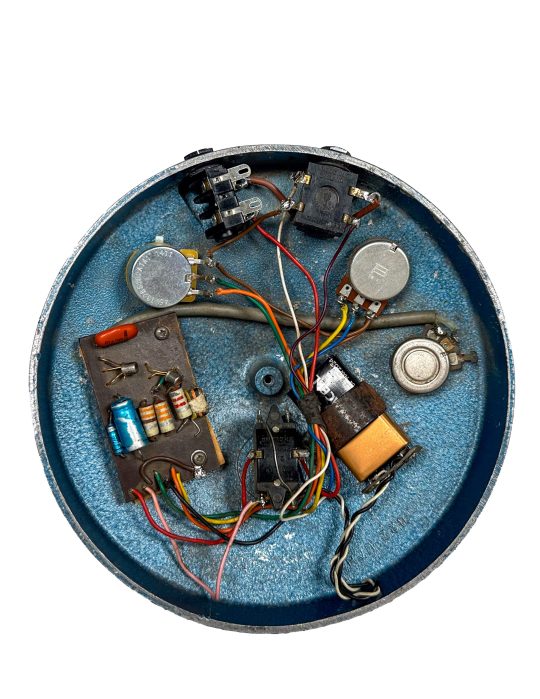

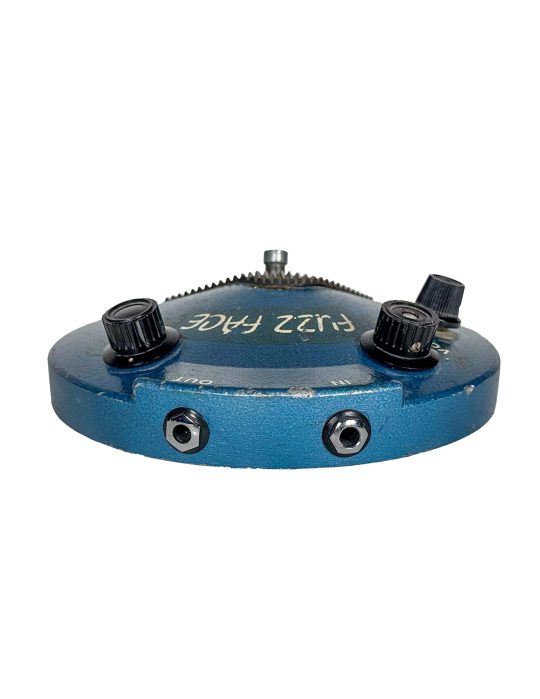
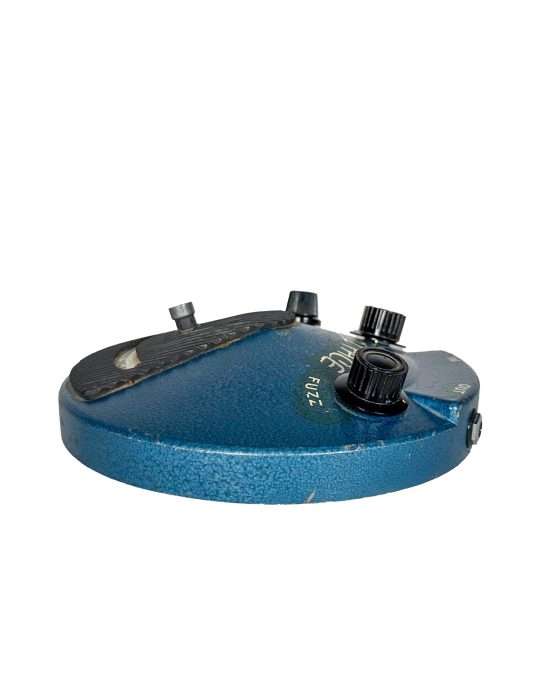

Dallas Arbiter - Fuzz Face
"Owned and used by Zoot Horn Rollo throughout his tenure with Captain Beefheart and modded by Zappa’s tech in the late 1960’s. The mod may be one of the first ever done on a fuzz face. If the knob is full counter clockwise and off – the fuzz face functions as normal. When turned, the tone goes to complete sputtery and gated in the max position. The pedal is functioning great and is missing its back plate. The silicon transistors are stamped IFK BC 108 C This pedal comes from a musician whom has worked and recorded with Zoot aka Bill Harkleroad in various projects."
cred: eclecticsounds.com
84 notes
·
View notes
Text
Revitalizing the old fan-server!
A place to talk about all Supergiant games: 🍃 Bastion 🎙️ Transistor 🌟 Pyre 🩸 Hades
Whether you played just one game or all of them, we would love to talk to old and new fans alike. The server is currently sparsely active, but the community is welcoming and excited to see more people join and participate!
We also have plenty of off-topic channels for sharing music, art, and the likes, as well as a voice channel for anyone who wants to stream or just chat!
Depending on how active the server may get again, also looking for more mods 👀
#supergiant games#hades#pyre#transistor#bastion game#hades game#pyre game#transistor game#bastion#supergiant#covering all my bases. join us!! :D
31 notes
·
View notes
Note
have. have we talked about what video games merlot woudl enjoy. have we discussed merlot gamer
huge fan of minecraft, though mods get him kinda disoriented (gregtech im looking at you...). do NOT make him play hardcore she'll cry when she loses the world.
rhythm games, mostly oriented towards project diva but occasional osu enjoyer. really bad at guitar hero but on keyboard (ie fortnite festival) he's decent
horror games are absolutely out of the question. especially ones that seem normal at first but there are things that start to look "off"
rpgs are always good. skyrim, final fantasy, transistor.
pretty much lots of casual stuff, slow paced games that you can sit down, chill out and enjoy without feeling the need to stress over much. mostly because merlot isn't good at difficult games. she would keel over trying dark souls
5 notes
·
View notes
Text
Beat Supergiant's Transistor! The quick battling + freeze frame attack planning was a really interesting system. I of course adored the sword husband and the art style and the music.
I did all the special little challenges that were available throughout the story before beating the game. I absolutely obliterated the final boss; using void() [with spark() for double stacks and crash() for vulnerability] twice followed by cull() [with mask() for 125% backstab damage and load() for 110% damage and radius] was frankly a ridiculous amount of damage, and was enough to fully wipe out each of the final boss's healthbar in a single turn.
There is a sort of "new game plus" mode where you keep your levels and can try to get the rest of the achievements, but honestly after reaching the end of the story, I don't feel a burning need to jump back to the narrative start, though it's nice to know I could go further with the difficulty if I really wanted to.
Very bittersweet game, and the ending definitely could have a lot of different outcomes and interpretations, which I think makes the narrative feel resonant and well-setup. After completely beating Hades it was nice to go back to one of Supergiant's previous successes and it makes me want to try out Bastion (as well as keep playing my silly modded Hades file).
13 notes
·
View notes
Note
(To mod) Is it possible for us anons to send in media that doesn't exist in this au, yet still fall within the 50s-60s range?
Yeah, as long as it isn't anything from the modern era, then we are good. Only when we get the transistor will I lift the restrictions, but that's later in the story
3 notes
·
View notes
Text
Bestie, Transistor, a game from the same studio (Supergiant) that is literally about the intersection of technology, art, and a bit of spookiness featuring a redheaded female protagonist saturated in Art Deco influences where everything looks like a lush oil painting is RIGHT THERE.


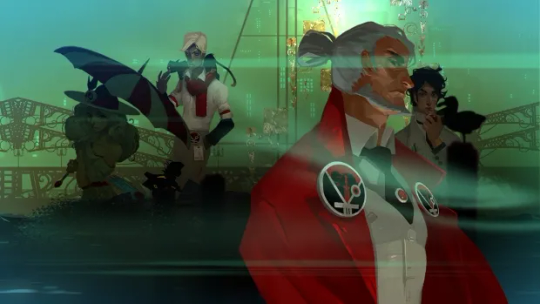
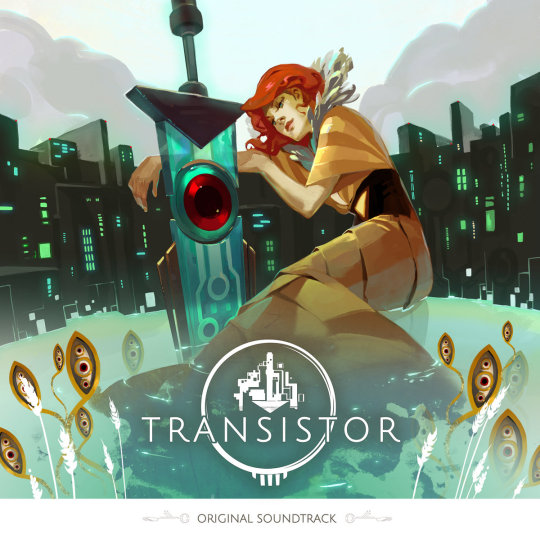
I love Hades as much as the next bisexual but it's a fumble to try and shoehorn Arcane into the inked comic book look that's heavily based on ancient greek motifs when Transistor is sitting right there looking like it could have been a wildly ambitious unauthorized Arcane mod of Hades that did stupidly well on Kickstarter before Netflix sued them into oblivion-- If only it hadn't come out an entire decade ago.

if arcane was based on actually playable game lmao
3K notes
·
View notes
Text
WEEK 81: I finally decided that I will in fact get the Jabba team up to relic 8, but I won’t go up to r9. I already have enough chromium transistors & aurodium heatsinks to get the whole team to r8, so the bottlenecks are pretty much the rest of the relic mats, the signal data, and the mod slicing mats. I just gave Skiff Guard Lando his TW omicron so I think I’m done with ability mats for this team. The only ones I don’t have maxed out are leader abilities and Boushh’s raid omicron.
Grand Arena started back up, and I ended up winning my first match and got promoted to Bronzium 3, but then forgot to participate in the following round and promptly got busted back down to Bronzium 4.
I have a fair shot at getting through the final sector of Conquest, and I’m definitely farther along than I’ve ever been before, but that alone won’t be enough to hit the final red crate. I’ll see what I can do, but I might just be stuck in Normal Conquest for a bit longer than anticipated.




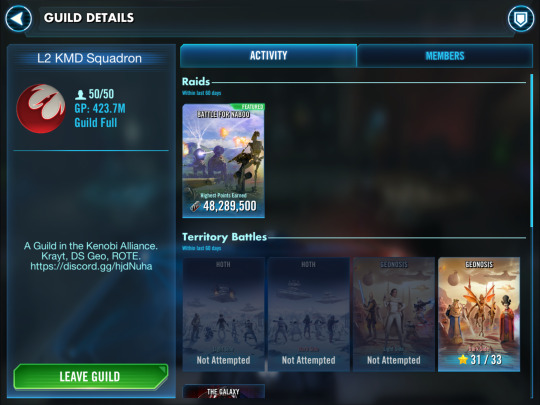



0 notes
Note
hi gang chloe here, the date is 05/06 and i'd like to send Adelaide (baldur's gate 3) and Red (transistor) home. adelaide was housed in tent A and Red was housed in sector E unit 12. you can reach me @bloodlamb on bsky, ty
Hello, Chloe! Sorry to see them go, but putting them on the train back home for you.
Red and Adelaide have been removed from our masterlist.
Mod Budgie
0 notes
Note
do you have a dni I'm not comfortable following people who allow proshits on their account I couldn't find it if you do
we generally think dni's are ineffective at best and obviously can't vet every single user that interacts with the blog, but rest assured that i and the rest of the mods don't condone bigotry, pedophilia, or anything else of that sort
#mod transistor#not a suggestion#i don't even know what else is typically on a dni but like. you get the picture
19 notes
·
View notes
Video
youtube
2.1 Operación básica del transistor bipolar de unión BJT mod, caracterís...
0 notes
Text
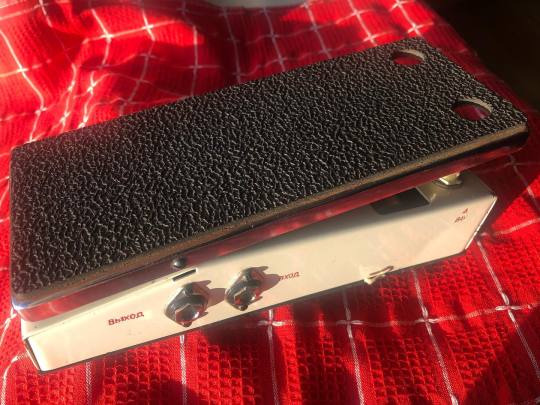
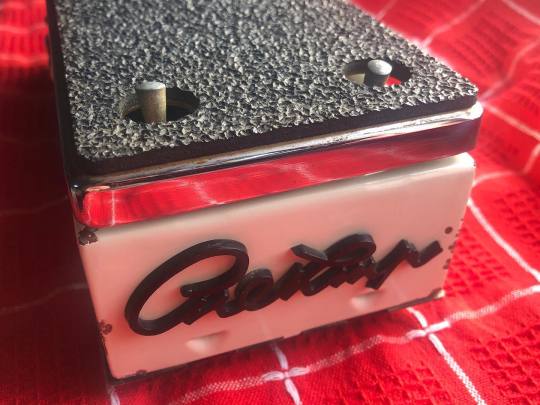
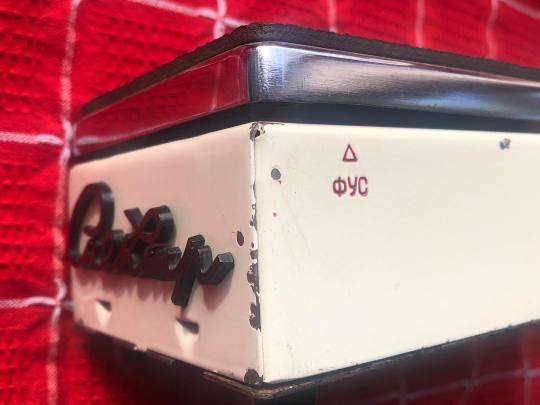
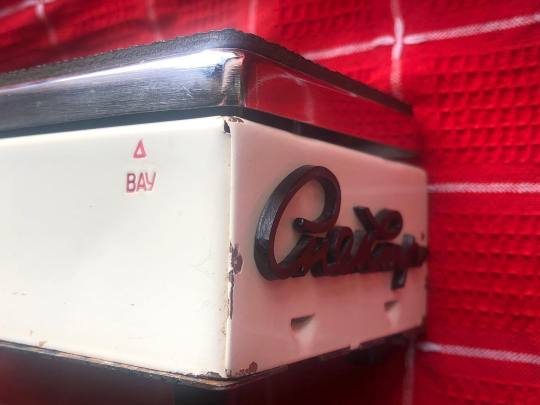
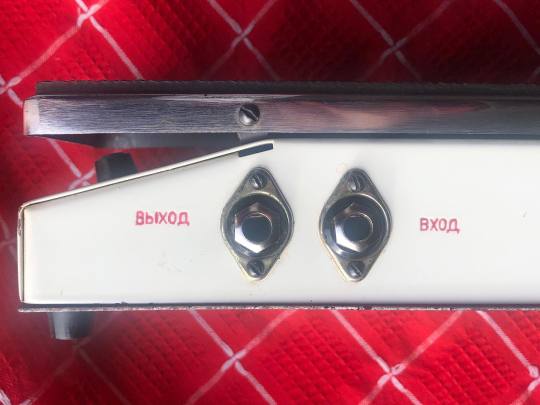
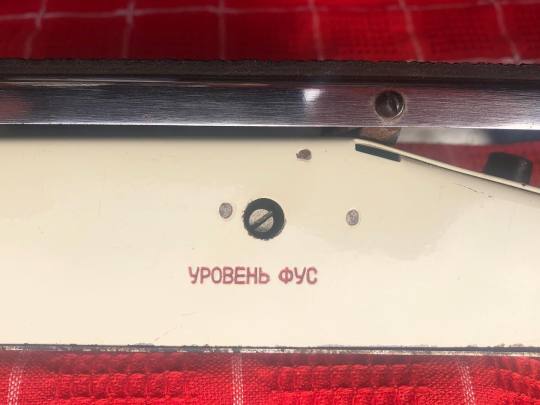
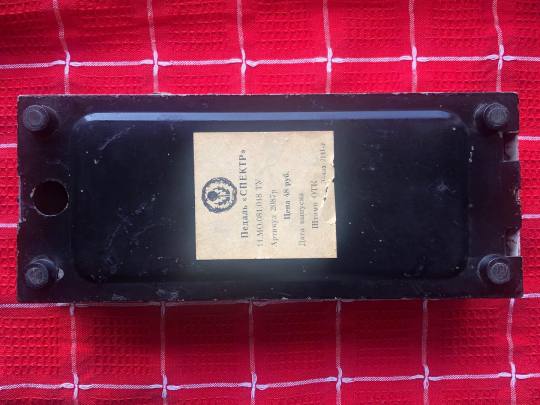
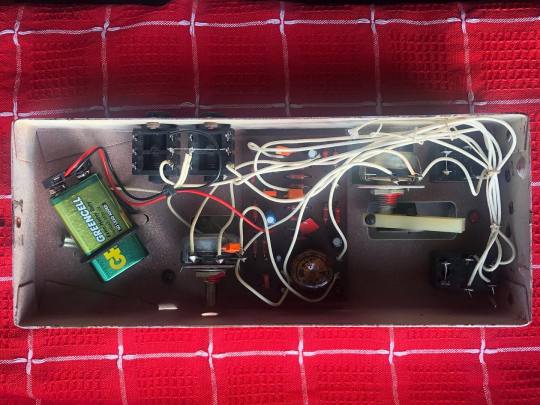
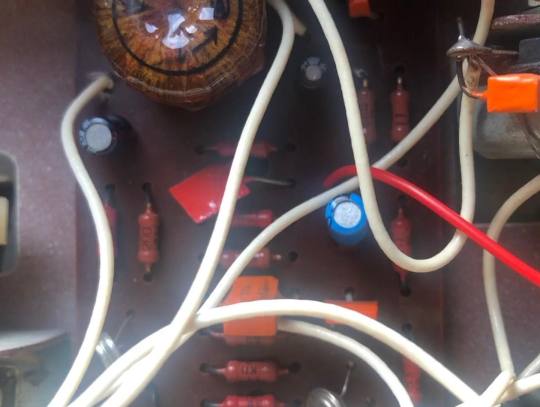
Elektronica - Spektr-2 Fuzz Wah
"1970s - early version ... Novosibirsk, Siberia. The treadle is for Wah only, the two metal switches engage Fuzz and Wah. They are more basic than on later versions, when they became black roller switches, but still activated by a Soviet rocker’s boot. The wah is so-so, probably best used as a tone boost for the fuzz, which is based on two “flying saucer” germanium transistors - scroll for gut shots. The wah inductor, possibly appropriately, resembles a mushroom. The side trim pot is for overall volume - gain is I think always on max. A very limited range of adjustment is possible with the guitar volume control. At full guitar volume, the fuzz is a psych “whiteout”. As a nod to practicality the DIN sockets have been changed to standard jacks - I think this is permissible as it requires no drilling. Power can be either battery or external via a battery clip adaptor threaded through a pre-existing hole underneath (designed to help remove the bottom plate). I don’t believe in unnecessary mods when there are good alternatives."
cred: instagram.com/humphreybarclay
24 notes
·
View notes
Text
Why there are so many diverse Tube Screamers?

Recently, I realized that I had never built a Tube Screamer before. This gap must be filled. It also makes sense to figure out which Tube Screamer I need and which is better for you. After all, if you play an electric guitar, then you probably need it in your life!
The Tube Screamer is probably the most popular of all guitar pedals. Especially if you count in numerous clones, mods, and pedals built based on the Tube Screamer circuit.
The scheme has proven to be so fitting that it suits most styles of guitar music, from light rock and blues to the heaviest styles with eight-string, low-tuned guitars.
The Tube Screamer has a nice-sounding overdrive of its own, ready for the clean channel of a pedal platform. It can also help to overdrive a vintage amp.
Or it can make the sound of a modern high-gain amplifier more focused by emphasizing the desired frequencies and preventing the amplifier from choking and squealing due to an excess of unwanted frequencies. And ensure the notes are legible while maintaining the warmth of the solo.
The legendary green pedal with a rectangular button and the number 808 in the name entered the market in 1979. Its name did not contain the phrase "Tube Screamer." It was produced not by Ibanez but by another Japanese company, Maxon. It continued to make the OD-808 and OD-9 for Ibanez and under its own brand.

Maxon employee Susumu Tamura not only developed the circuit and case for the Overdrive OD808 but also came up with the name Tube Screamer Overdrive Pro, which is already for the Ibanez TS808.

Today, early examples of the Maxon OD808 and Ibanez TS808 are highly collectible. This screenshot from Reverb shows the prices that are considered not that high. However, there's always a chance to find it in a pawn shop or local market.
Like most guitar pedals and amps, the Tube Screamer's circuit was not designed from scratch. Enthusiasts of guitar electronics and analog synthesis love to disassemble the products of their colleagues and improve or rearrange something in them to create unique devices based on what they have learned.
In 1977, the Roland BOSS Corporation, also from Japan, released the OD-1 overdrive pedal. Let's look at its diagram, starting from the power stage in the lower left corner.

The power socket is connected through diode D4 and resistor R15. Together with capacitors C11 and C8, R15 forms a U-shaped power filter.
Why is diode D4 needed? To protect against reverse polarity, the circuit has a Zener diode D5. It also protects the pedal from overvoltage above 11 volts. Diode D4 does not act as a rectifier either since the pedal is designed to be powered by a DC adapter.
In the post about the legendary BOSS DS-1 distortion, we've already seen precisely this power supply circuit. And we have found out that this is not just a filter or additional protection but also an analog simulation of the voltage drop of a 9-volt molten-salt battery. This stage is found in many early BOSS pedals, improving the tone.
We will not show the bypass JFET circuit since we discussed it in the same article. It's precisely the same, and many enthusiasts don't like it, preferring true bypass instead.
True bypass with LED indication can be implemented using a 3PDT foot switch. You can get by with DPDT if you use the Millennium bypass indicator circuit described in the post on Brown Sound in a box.
The virtual ground, indicated in the diagram by a diamond, is formed by resistors R7 and R8. They have equal resistance values and divide the supply voltage in half. Capacitor C3 grounds the virtual ground for alternating current.
The input and output buffers on transistors Q1 and Q2 are the usual emitter followers.
An overdrive section is built on the operational amplifier U1A, and an active filter is made on U1B. Most of the first BOSS OD-1 pedals used Raytheon's RC3403ADB quad op-amps.
But sometimes, you can find a copy with the uPC4741C chip from the Japanese company NEC. This is neither a counterfeit item nor a refurbished pedal, but a genuinely original BOSS OD-1. Known examples with uPC4741C were produced in 1978.
Roland/BOSS then stopped using the quad op-amp as a dual op-amp, and later pedals contained the 4558 IC with different indexes.
What does the 1977 BOSS OD-1 have to do with it when we're talking about the 1979 Maxon OD808, you might ask? Just have a look at the OD808 diagram.

As you can see, these two schemes have a lot in common! Several components have been swapped for different values compared to the BOSS OD-1. Capacitors C5 and C6 have been added; C9 has been removed.
The D3 diode was also excluded, so clipping became symmetrical instead of asymmetrical. And most importantly, the R14 tone control has been added. It started as a pedal with two knobs; now it has three.
This time, BOSS studied Maxon's overdrive and, in 1981, released the SD-1 Super Overdrive! Here is its diagram.

Some call this practice stealing ideas, but BOSS, Maxon, and Ibanez ultimately benefited from it, as did the guitarists and listeners. The more different pedals with different nuances, the better!
Next came the TS9 and many other Tube Screamers and overdrives from various manufacturers. My pick is the MXR ZW44 circuit.

This is a Zakk Wylde signature pedal; at its core, it is still the same Tube Screamer. Or rather, SD-1 Super Overdrive because the limitation here is asymmetrical.
I enjoy the range of tone, gain adjustments, and how Tube Screamer's volume control affects the amp's overdrive. You can get a lot of different sounds and fine-tune their shades.
Without Tube Screamer, the amp responds to the gain knob input differently because it is the overdrive pedal that determines the frequency bands that will be emphasized. And this is the primary purpose of the pedal.
0 notes
Text

TRANSISTOR REUNION!
Saturday, December 7th
at Hello Stranger LA in Little Tokyo
320 E. 2nd St. 90012
Original Transitor DJs:
• Dorian • Alex • Clifton • Maurice de la Falaise • Chris Griffins •
Playing THE SOUNDTRACK TO YOUR LIFE! Mod, Soul, Shoegaze, Ska, Post-Punk, 60’s, Britpop, Disco, Motown, 80’s, Punk, etc.
10pm • 21+
“The reason the club started was as a homage to CaféBleu, a club we all loved and grew up with. When it ended, we decided to continue on the tradition playing the music we love for us and for a whole new generation of people who shared the same interests, mod, soul, shoegaze,ska, post-punk,60s, britpop, disco, motown, 80s, punk, etc. Our love for music was the main inspiration put together to bring you Transistor.”
0 notes
Note
i’d like to drop red from transistor for now! she was housed in townhouse 215. thank you!
Dropped for you!
--Mod Lyra
1 note
·
View note
Text
Skald Modular Skald One: un nuovo sistema polifonico Eurorack

Skald Modular ha recentemente presentato al SynthFest UK 2024 il suo Skald One, un nuovo sistema polifonico analogico per Eurorack che promette di semplificare la complessità spesso associata alla creazione di suoni polifonici nel mondo modulare. Ma mantiene le promesse? Approfondiamo nel dettaglio questa interessante novità.

Un approccio innovativo alla polifonia Eurorack La polifonia in Eurorack è notoriamente impegnativa. Richiede numerosi moduli per ogni voce (VCO, VCF, inviluppo, ecc.), un'infinità di patch, e conseguentemente, un groviglio di cavi che può facilmente trasformarsi in un incubo. Inoltre, cambiare i patch può essere un processo lungo e tedioso. Skald Modular tenta di risolvere questo problema con un approccio modulare, ma intelligentemente integrato. Il sistema Skald One si compone di quattro moduli voce, un modulo interfaccia MIDI e un modulo di output. Questo approccio "daisy-chain", simile a quello del Dreadbox Telepathy, permette di collegare in serie i moduli voce, creando un sistema polifonico a quattro voci. La differenza principale risiede nell'integrazione: mentre il Telepathy integra il MIDI nei moduli voce, Skald One utilizza un modulo MIDI dedicato. Analisi dettagliata dei moduli Ogni modulo Skald One Voice offre un VCO, un VCF, un VCA e un inviluppo ADSR. Il VCO è un oscillatore analogico discreto con tre forme d'onda selezionabili: dente di sega, impulso e off. È possibile applicare la modulazione di larghezza di impulso (PWM) all'onda quadra e la modulazione di pitch. Il filtro controllato in tensione (VCF) è un filtro passa-basso auto-oscillante a 24dB con tecnologia OTA, con una gamma di frequenza nominale da 20Hz a 20kHz. Può essere modulato tramite l'inviluppo o un ingresso di modulazione esterno. La possibilità di auto-oscillazione aggiunge un'ulteriore opzione sonora interessante, fungendo da VCO aggiuntivo. Il segnale passa poi attraverso un VCA a transistor, controllato internamente dall'inviluppo ADSR. I controlli comprendono attacco, decadimento e rilascio (decay e release condividono lo stesso potenziometro). L'uscita audio principale è a livello di segnale Eurorack (10V picco-picco). Un LFO PolyBus è normalizzato a tutti gli ingressi di modulazione in modalità polifonica. Il sistema polifonico completo Per ottenere la polifonia, è necessario aggiungere il modulo MIDI PolyBus (12HP) e il modulo Output (8HP). Il modulo PolyBus riceve il segnale MIDI su TRS, assegnando le quattro voci ai moduli voce disponibili. Il pitch bend viene inviato a tutte le voci, con la profondità globale impostabile sul pannello. Il modulo include anche un semplice LFO ad onda triangolare inviato a tutti e quattro i moduli voce, con controllo della profondità globale tramite la mod wheel. Il modulo Output somma i segnali delle quattro voci in un segnale monofonico, con tre destinazioni: uscita diretta Eurorack (10V p-p), uscita cuffie TRS da 1/4” e uscita linea su jack mono da 1/4”. Considerazioni finali e prezzo Skald Modular Skald One rappresenta un tentativo apprezzabile di rendere la polifonia Eurorack più accessibile. L'approccio modulare, pur richiedendo moduli aggiuntivi, offre una soluzione più "hands-on" rispetto ad altri sistemi basati su menu complessi. Tuttavia, il prezzo complessivo del sistema completo (£2115) potrebbe essere considerato elevato, soprattutto considerando alternative come il Dreadbox Telepathy (sei voci a un prezzo inferiore). La scelta dipenderà dalle esigenze e dalle preferenze individuali: Skald One punta su una maggiore immediatezza, mentre Telepathy offre una maggiore polifonia a un costo inferiore, ma con una maggiore complessità di utilizzo. In definitiva, Skald Modular Skald One è un sistema interessante che merita attenzione. La sua semplicità di utilizzo e il suo suono analogico caldo potrebbero renderlo una scelta vincente per chi cerca una soluzione polifonica Eurorack immediata e intuitiva, pur essendo consapevole del costo relativamente elevato. https://www.youtube.com/watch?v=xj5-DoUwDAQ&t=312s Read the full article
0 notes